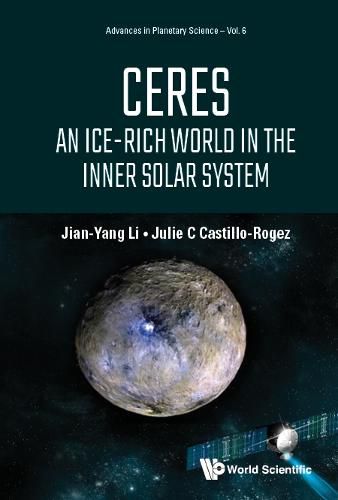Readings Newsletter
Become a Readings Member to make your shopping experience even easier.
Sign in or sign up for free!
You’re not far away from qualifying for FREE standard shipping within Australia
You’ve qualified for FREE standard shipping within Australia
The cart is loading…






This title is printed to order. This book may have been self-published. If so, we cannot guarantee the quality of the content. In the main most books will have gone through the editing process however some may not. We therefore suggest that you be aware of this before ordering this book. If in doubt check either the author or publisher’s details as we are unable to accept any returns unless they are faulty. Please contact us if you have any questions.
Thanks to NASA’s Dawn mission, the last half-decade has witnessed a significant advance in our understanding of Ceres. The largest object between the orbits of Mars and Jupiter, Ceres is the most water-rich body in the inner solar system after Earth which shows evidence of brine-driven activity in its recent history, and even possibly at the present. The potential existence of a subsurface ocean or regional seas in Ceres and its salt- and organic-rich composition underscore its astro-biological significance. After signaling the discovery of the asteroid belt more than two centuries ago, Ceres once again reveals new insights for us to understand the formation, evolution, and habitability of this large icy body in our solar system.
This book reviews the current state of knowledge about Ceres after the extensive scientific exploration by the Dawn mission. Starting from the introduction of the discovery of Ceres and what we know about this enigmatic world before Dawn’s arrival, each chapter focuses on one aspect of Ceres, including its surface composition, its geology, the role of water ice in shaping Ceres’s surface, its interior structure, and expressions of cryovolcanic or brine activity at the surface. Following this framework, the book addresses the astro-biological significance of Ceres. The last chapter summarizes the new questions opened by the Dawn mission and the next step to exploring the dwarf planet closest to Earth.
$9.00 standard shipping within Australia
FREE standard shipping within Australia for orders over $100.00
Express & International shipping calculated at checkout
This title is printed to order. This book may have been self-published. If so, we cannot guarantee the quality of the content. In the main most books will have gone through the editing process however some may not. We therefore suggest that you be aware of this before ordering this book. If in doubt check either the author or publisher’s details as we are unable to accept any returns unless they are faulty. Please contact us if you have any questions.
Thanks to NASA’s Dawn mission, the last half-decade has witnessed a significant advance in our understanding of Ceres. The largest object between the orbits of Mars and Jupiter, Ceres is the most water-rich body in the inner solar system after Earth which shows evidence of brine-driven activity in its recent history, and even possibly at the present. The potential existence of a subsurface ocean or regional seas in Ceres and its salt- and organic-rich composition underscore its astro-biological significance. After signaling the discovery of the asteroid belt more than two centuries ago, Ceres once again reveals new insights for us to understand the formation, evolution, and habitability of this large icy body in our solar system.
This book reviews the current state of knowledge about Ceres after the extensive scientific exploration by the Dawn mission. Starting from the introduction of the discovery of Ceres and what we know about this enigmatic world before Dawn’s arrival, each chapter focuses on one aspect of Ceres, including its surface composition, its geology, the role of water ice in shaping Ceres’s surface, its interior structure, and expressions of cryovolcanic or brine activity at the surface. Following this framework, the book addresses the astro-biological significance of Ceres. The last chapter summarizes the new questions opened by the Dawn mission and the next step to exploring the dwarf planet closest to Earth.